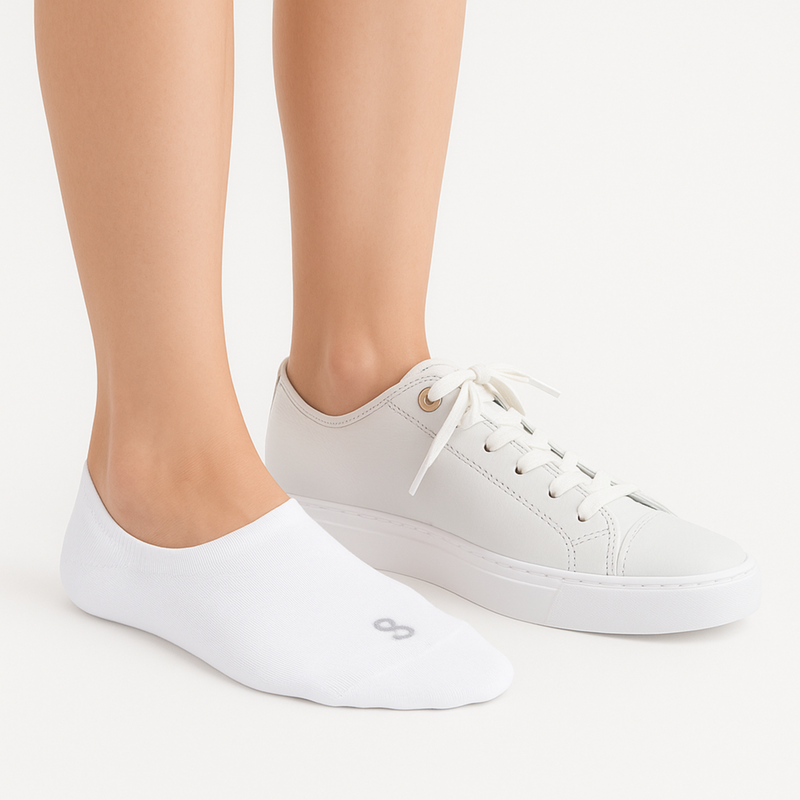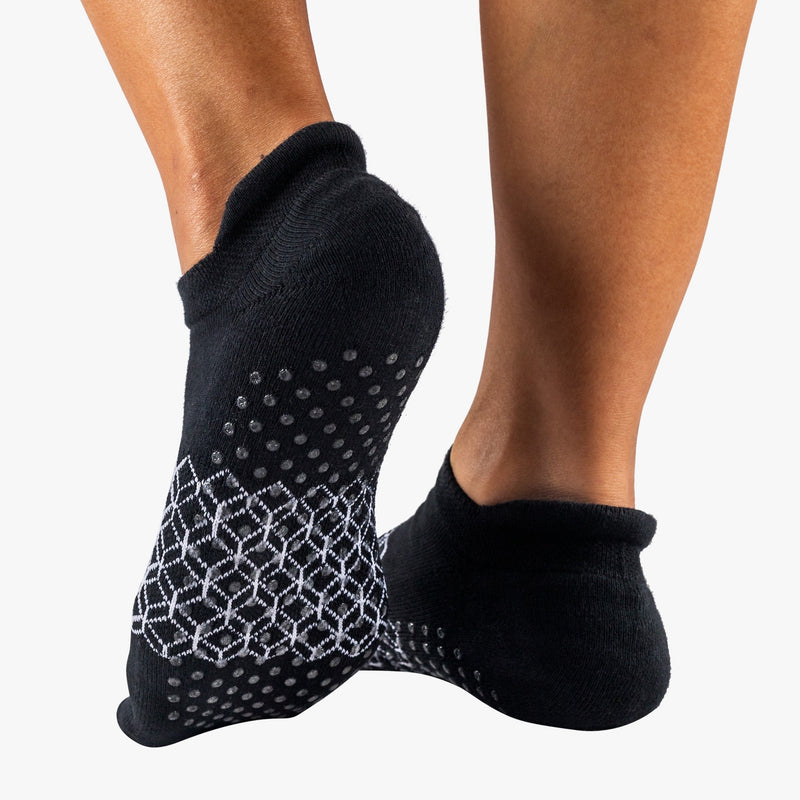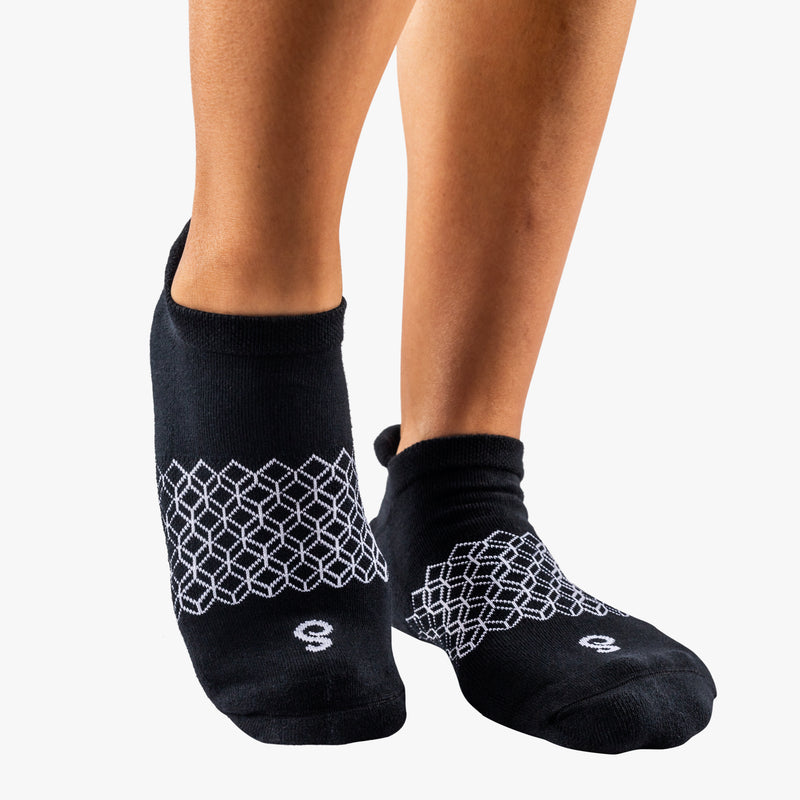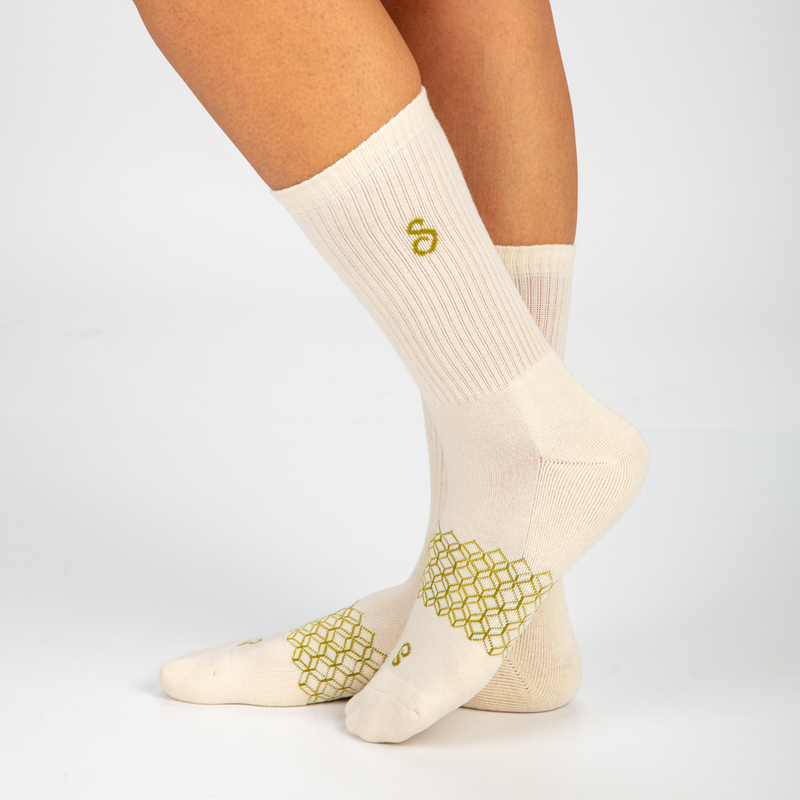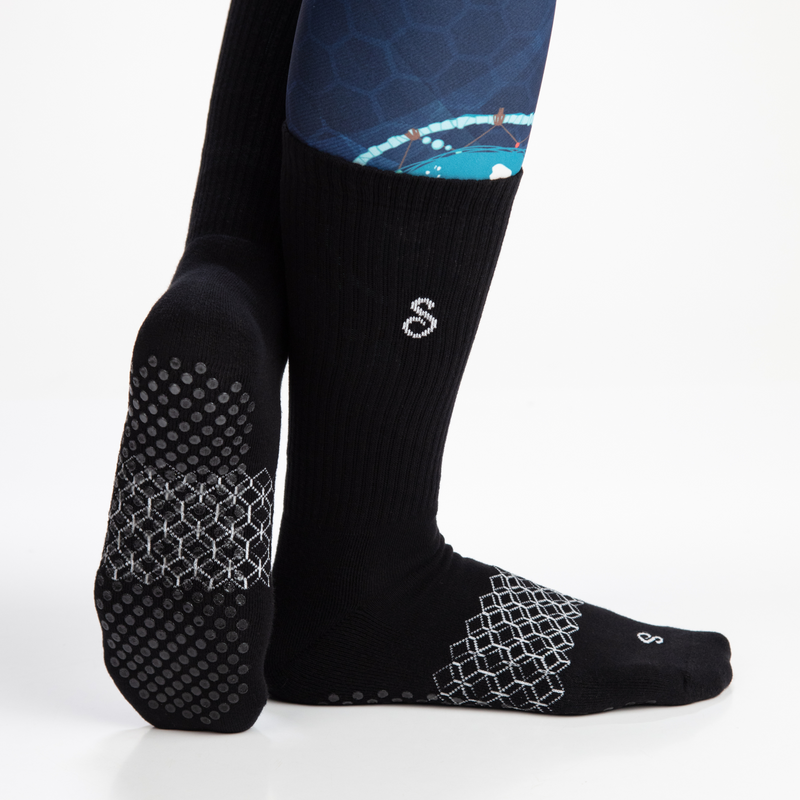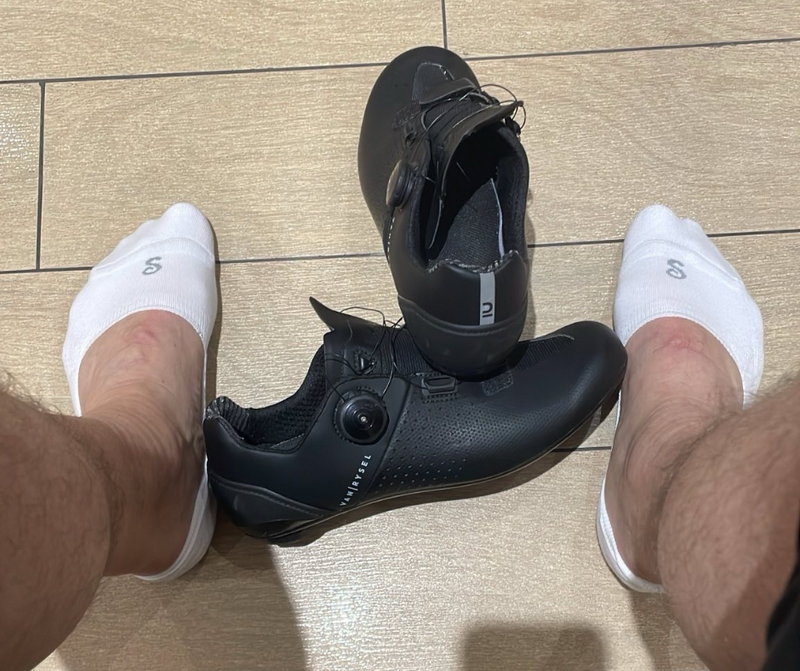
Finding the right socks for a spin class can make a difference in comfort and performance. The best socks for spin class provide support, breathability, and moisture-wicking properties. Choosing the right pair can help cyclists prevent blisters and enhance their overall experience on the bike.
Many people underestimate how important socks are during intense workouts. Specialised spinning socks are designed to fit snugly, ensuring they don’t slip or bunch up during a ride. Investing in quality socks means better enjoyment and focus during each class.
Knowing what to look for in a spinning sock will help in making an informed choice. From fabric to cushion, the right features play a crucial role in getting the most out of cycling sessions.
Key Takeaways
- Spin socks enhance comfort and prevent blisters.
- Look for breathable and moisture-wicking materials.
- Proper fit is vital for optimal performance.
Why Proper Socks Are Essential for Spin Class
Choosing the right socks can make a big difference in spin classes. Proper socks enhance comfort, support, and performance during workouts.
Fitness enthusiasts should consider the following benefits of proper socks:
-
Comfort: Socks made from breathable materials wick away sweat. This keeps feet dry and comfortable throughout the session.
-
Support: Good socks provide cushioning that helps absorb impact. This support can reduce fatigue during intense cycling.
-
Fit: Well-fitting socks prevent slipping inside cycling shoes. They stay in place, allowing for smooth pedalling.
-
Temperature Regulation: Socks with moisture-wicking properties help maintain a comfortable temperature. They keep feet cool in summer and warm in winter.
-
Injury Prevention: Wearing the right socks can help prevent blisters and calluses. This allows for longer and more enjoyable workouts.
When selecting socks for spinning, look for those made from breathable and durable materials. Performance socks often incorporate special features that enhance their suitability for high-energy activities.
In short, the right socks are essential for a successful spinning experience. They support performance and keep feet comfortable, allowing individuals to focus on their fitness goals. Choosing wisely can lead to a more enjoyable workout.
Features to Look for in Spin Class Socks
Choosing the right socks for spin class can enhance comfort and performance. Key features include materials that manage moisture, breathable designs, added cushioning, compression options, and secure cuffs. Each aspect plays a role in how the socks support riders during workouts.
Sweat-Wicking Materials
Socks made from sweat-wicking materials help keep feet dry during intense spinning sessions. Fabrics like polyester, nylon, and merino wool are effective in drawing moisture away from the skin. This helps prevent blisters and discomfort caused by dampness.
When selecting socks, look for descriptions that mention moisture management or fast-drying properties. Some brands use specialised blends that increase durability while maintaining comfort. A good option may feel soft against the skin but still effectively handle sweat to ensure a more pleasant experience.
Breathability and Mesh Zones
Breathable socks have features that enhance airflow to maintain coolness. Look for socks with mesh zones, which are typically made from thinner fabric. These areas allow heat and moisture to escape, reducing the risk of overheating during a workout.
A pair that balances warmth and ventilation will contribute to overall comfort. Socks with good breathability can prevent feet from becoming too hot and sweaty. This is especially important in spinning classes, where intense effort can lead to discomfort without proper airflow.
Padding and Support
Padding can make a significant difference in comfort levels during a spinning class. Socks with extra cushioning in key areas, like the heel and ball of the foot, provide support where it matters most. This extra layer can absorb impact and reduce fatigue.
Consider socks with targeted padding features that align with typical spinning movements. Properly padded socks can enhance the riding experience, providing needed comfort throughout the session. They also help in reducing strain on the feet during long rides.
Compression Fit
Compression socks are designed to hug the foot and lower leg. A snug fit can improve circulation and reduce the risk of cramps during intense workouts. Look for options that specify compression levels suitable for athletic performance.
These socks can help support muscles during activity. Many riders find compression socks provide a feeling of stability. This added support can lead to improved endurance, making them a popular choice among serious cyclists.
Snug Cuffs
Cuffs that fit snugly around the ankle prevent socks from sliding down during movement. A well-designed cuff should be tight enough to stay in place without causing discomfort. Look for ribbed or elasticised designs for added grip.
By ensuring that the socks stay up throughout the spin class, riders can concentrate on their performance. Snug cuffs keep the sock properly positioned, preventing distractions. This feature is particularly important during high-energy workouts where movement is constant.
Material Considerations
Choosing the right material for spinning class socks can greatly impact comfort and performance. The materials affect moisture control, durability, and warmth. Here are important comparisons to help select the best option.
Merino Wool Versus Synthetic Fabrics
Merino wool is a natural fibre known for its moisture-wicking properties. It keeps feet dry by drawing sweat away from the skin. This is important in intense spinning classes, where staying comfortable is key. Merino wool also has temperature-regulating qualities, keeping feet warm in cold weather and cool when it's hot.
Synthetic fabrics, like nylon or polyester, are lightweight and often more affordable. They provide excellent stretch and durability, which can enhance the fit of the sock. Many synthetic options also feature moisture control technology. However, they may not offer the same level of warmth as merino wool.
Pros and Cons of Cotton
Cotton is soft and breathable, offering immediate comfort. However, it absorbs moisture rather than wicking it away. This can lead to sweaty and damp socks during a spinning session. Wet cotton can also cause blisters and discomfort.
Despite these downsides, cotton socks can be appealing for light exercise or casual wear. They are generally more affordable and come in various styles. For spinning classes, though, the drawbacks of cotton often outweigh the benefits.
Blended Fabric Benefits
Blended fabrics, which mix natural and synthetic materials, can offer a balance of comfort and performance. For example, a blend of merino wool and polyester combines the moisture-wicking properties of wool with the durability of synthetic fibres.
These blends can provide additional stretch, making the sock fit better. They often include features like arch support and cushioning, adding to comfort during workouts. When choosing socks for spinning classes, blended options are often a smart choice for those seeking versatility and performance.
Top Socks for Comfort and Performance
Choosing the right socks can enhance the experience in a spinning class. Key features to consider include the fit and construction of the sock. These factors can help improve comfort and performance during workouts.
Ergonomic Fit Options
Socks designed with an ergonomic fit cater to the shape of the foot. This type of design often includes arch support and cushioning in key areas.
Many brands offer socks with sizes that correspond to specific shoe sizes. This ensures a snug fit, reducing the chance of blisters during intense rides. Features like graduated compression can also improve blood flow, helping to prevent fatigue.
Socks made from moisture-wicking materials draw sweat away from the skin. This keeps the feet dry and comfortable, which is vital during a spinning class.
Seamless Toe Construction
Seamless toe construction is another important feature for comfort. Traditional seams can create friction and pressure points, leading to discomfort.
Socks with seamless toes offer a smooth finish that reduces irritation. This design allows for a more natural foot movement while pedalling.
Many brands use stitching techniques that create a nearly invisible seam. This makes a significant difference during high-intensity workouts.
When shopping for socks, look for those labeled as having seamless toe construction for added comfort. Together with other features, this can make a positive impact on the spinning experience.
Sizing and Fit Guide
Choosing the right sock size is important for comfort during spinning classes. The correct fit helps prevent blisters and ensures better performance.
Most brands have a size chart that includes foot measurements. Here’s a simple guide to sock sizes:
| UK Size | Sock Size |
|---|---|
| 3 - 5 | Small |
| 6 - 8 | Medium |
| 9 - 11 | Large |
| 12 - 14 | Extra Large |
When selecting socks, consider the following tips:
- Try Before You Buy: If possible, try the socks on to ensure they fit well without being too tight or loose.
- Look for Size Range: Some socks come in sizes that fit a range of foot sizes.
- Consider Thickness: Thicker socks may fit tighter in shoes. Adjust the size accordingly.
The material can affect the fit as well. Socks made from materials with stretch, like spandex or elastic, will hug the foot better.
Wearing socks that are too small can lead to discomfort. Socks that are too large may bunch up, causing irritation.
Taking the time to find the right size can enhance the spinning experience. Comfort contributes significantly to overall enjoyment during workouts.
Care and Maintenance Tips
Socks for spinning class require proper care to ensure their longevity. Following a few simple steps can help keep them in top condition.
Washing Instructions:
- Gentle Cycle: Always wash socks on a gentle cycle to protect the fabric.
- Cold Water: Use cold water to prevent shrinking and fading.
- Mild Detergent: Choose a mild detergent to keep the material soft.
Drying Tips:
- Air Dry: It is best to air dry socks. Hanging them up will help maintain their shape.
- Avoid Heat: Do not use a tumble dryer as high heat can damage the fibres.
Storage Suggestions:
- Keep Dry: Store socks in a dry place to prevent mildew.
- Avoid Overcrowding: Do not overcrowd storage to keep them from becoming misshapen.
Regular Inspection:
- Check for Damage: Look for holes or thinning areas regularly.
- Replace When Needed: It is important to replace worn-out socks to maintain comfort during workouts.
Taking these steps will help ensure that spinning socks remain comfortable and effective for a long time. Proper care can make a difference in performance and durability.
Where to Buy Spinning Class Socks
Finding the right socks for spinning class can be easy with a few good options. Here are some places to consider:
-
Sporting Goods Stores: These stores often have a dedicated section for fitness apparel. Brands like Nike and Adidas typically stock quality spinning socks.
-
Online Retailers: Websites like Amazon and eBay offer a wide range of choices. They provide customer reviews, which can help in making a decision.
-
Specialty Fitness Shops: Shops focusing on cycling or fitness gear may carry socks designed specifically for spinning. These can provide better support and breathability.
-
Department Stores: Sections in larger department stores often include athletic socks. Here, shoppers can find affordable options in various styles.
-
Brand Websites: Some brands have online stores, which may offer exclusive designs or discounts.
Things to Consider:
- Material: Look for moisture-wicking fabrics to keep feet dry.
- Cushioning: Some socks offer extra padding for comfort during workouts.
- Fit: The right size is crucial for performance and comfort.
Shopping for spinning socks can be simple with these options. Keeping in mind the material and fit can improve the experience.
Summary and Best Practices
Choosing the right socks for spinning class enhances comfort and performance. Here are some best practices to keep in mind.
Key Features to Look For:
- Breathability: Choose socks made from materials like merino wool or synthetic fibres that allow air flow.
- Moisture-Wicking: Look for socks that pull sweat away from the skin to keep feet dry.
- Support and Cushioning: Opt for socks with padding in key areas for comfort during intense workouts.
Socks Recommendations:
| Sock Type | Description |
|---|---|
| Lightweight | Great for breathability and comfort. |
| Compression | Provides support to reduce fatigue. |
| Crew Length | Offers extra coverage and warmth. |
| No-Show | Ideal for a minimalist look. |
Care Tips:
- Wash socks in cold water to maintain fabric quality.
- Air dry whenever possible to avoid shrinkage.
- Rotate between pairs to extend sock lifespan.
By following these guidelines, individuals can find the perfect socks for their spinning classes, ensuring an effective and enjoyable workout experience.
Frequently Asked Questions

Choosing the right socks for spinning classes can impact comfort and performance. Here are answers to common questions about the best options for both men and women.
What type of socks should one wear for a spin class for optimum performance?
For a spin class, it is best to wear lightweight, breathable socks. Look for socks made from moisture-wicking materials to keep the feet dry. Thin socks can enhance pedal grip and provide a better connection to the bike.
Are there specific cycling socks that are recommended for women in spin classes?
Yes, many brands offer cycling socks designed for women. These typically include features such as arch support and a snug fit. Look for options with extra cushioning to enhance comfort during high-intensity sessions.
For men participating in spin classes, which socks offer the best comfort and efficiency?
Men should consider socks that are specifically designed for cycling. These socks often feature padded soles for added comfort and support. Opting for socks with a snug fit can also help improve pedalling efficiency.
Is it advisable to wear compression socks during a spin workout session?
Wearing compression socks can be beneficial during a spin workout. They provide support to the calf muscles and improve blood circulation. This can lead to reduced muscle fatigue and quicker recovery after intense exercise.
What are the benefits of choosing thin socks over thick ones for cycling activities?
Thin socks typically offer better breathability, which keeps the feet cooler during exercise. They also reduce the risk of blisters by providing a closer fit inside the cycling shoes. Additionally, thin socks allow for more precise control of the bike.
Can cycling socks enhance the spin class experience, and if so, how?
Yes, cycling socks can significantly enhance the spinning experience. They help maintain foot comfort and temperature during workouts. Proper socks can also improve grip and control, making the ride more enjoyable and effective.






